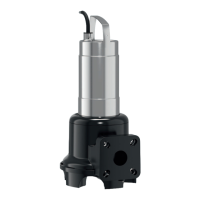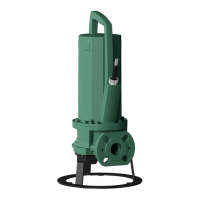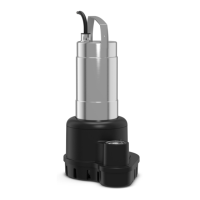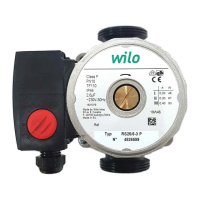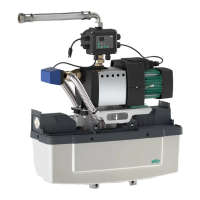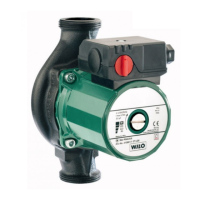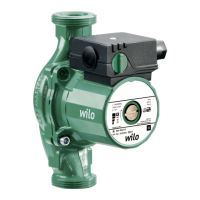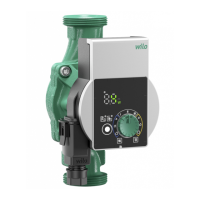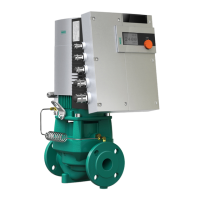Safety en
Installation and operating instructions Wilo-Rexa UNI 7
▪Replace defective power supply cables immediately.
Contact customer service.
2.4 Monitoring devices
The following monitoring equipment must be provided
on-site:
Circuit breaker
The size of the circuit breakers conforms to the rated
current of the pump. The switching characteristics
should comply with group B or C. Observe local regula-
tions.
Motor protection switch
Make provision for an on-site motor protection switch
for devices without a plug! The minimum requirement
is a thermal relay/motor protection switch with tem-
perature compensation, differential triggering and
anti-reactivation device in accordance with the local
regulations. In case of sensitive mains, make provision
for the installation on-site of other protective equip-
ment (e.g. overvoltage, undervoltage or phase failure
relay, etc.).
Residual-current device (RCD)
Comply with the regulations of the local energy supply
company! The use of a residual-current device is re-
commended.
If persons come into contact with the device and con-
ductive fluids, secure the connection with a residual-
current device (RCD).
2.5 Use in fluids hazardous to health
There is a danger of bacterial infection when using the
device in fluids hazardous to health! Thoroughly clean
and disinfect the device after dismantling and prior to
further use. The operator must ensure the following:
▪The following protective equipment is provided and
worn when cleaning the device:
– Closed safety goggles
– Breathing mask
– Protective gloves
▪All persons are informed about the fluid, the associated
danger and its correct handling!
2.6 Transport
▪The following protective equipment must be worn:
– Safety shoes
– Safety helmet (when using lifting equipment)
▪Always hold the handle to transport the device. Never
pull the power supply cable!
▪Only use legally specified and approved lifting gear.
▪Select the lifting gear based on the available conditions
(weather, attachment point, load, etc.).
▪Always attach the lifting gear to the attachment points
(handle or lifting eyelet).
▪The stability of the lifting equipment must be ensured
during operation.
▪When using lifting equipment, a second person must be
present to coordinate the procedure if required (e.g. if
the operator’s field of vision is blocked).
▪Persons are not permitted to stand beneath suspended
loads. Do not lift loads above workplaces, on which
people are present.
2.7 Installing/dismantling
▪Wear the following protective equipment:
– Safety shoes
– Safety gloves against cuts
– Safety helmet (when using lifting equipment)
▪Locally applicable laws and regulations for work safety
and accident prevention must be complied with.
▪Disconnect the device from the mains and secure it
against being switched on again without authorisation.
▪All rotating parts must be at a standstill.
▪Provide adequate aeration in closed rooms.
▪When working in chambers and closed spaces, a second
person must be present for safety reasons.
▪Take immediate countermeasures if there is a build-up
of toxic or suffocating gases!
▪Clean the device thoroughly. Disinfect devices that are
used in fluids hazardous to health!
▪Make sure that there is no risk of explosion when carry-
ing out any type of welding work or work with electrical
devices.
2.8 During operation
▪Wear the following protective equipment:
– Safety shoes
– Ear protection (in accordance with the notice of the
work regulations)
▪Work area of the device is not an recreational area. No
persons are allowed in the work area during operation.
▪The operator must immediately report any faults or ir-
regularities to their line manager.
▪If safety-endangering defects occur, the operator must
immediately deactivate the device:
– Malfunction of the safety and monitoring equipment
– Damage to the housing parts
– Damage to the electrical equipment
▪Never reach into the suction port. The rotating parts
can crush and sever limbs.
